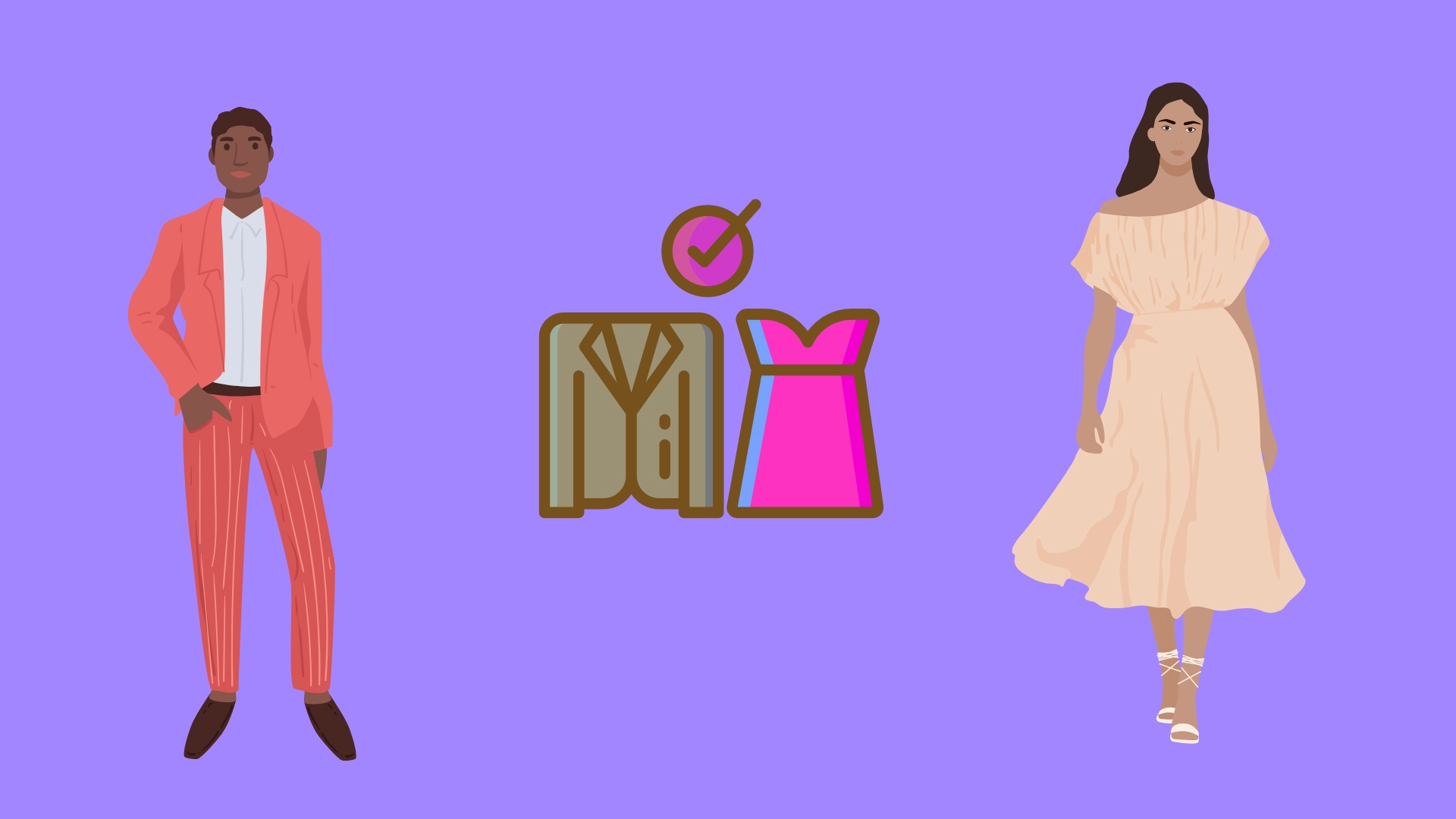Picture this: You open your mailbox and find an invitation to an event that promises an evening of elegance, networking, or perhaps even a touch of romance. Your eyes scan the details—date, time, venue—and then you see it: “Dress Code: Semiformal.” A wave of uncertainty washes over you. What does “semiformal” even mean? Is it a notch below formal, a step above casual, or some enigmatic blend of both?
You’re not alone in this sartorial conundrum. The term “semiformal” has perplexed event-goers for years, leaving many to wonder whether they’re overdoing it with a three-piece suit or underwhelming in a simple sundress. This ambiguity often leads to a wardrobe crisis, a last-minute shopping spree, or worse, an evening spent feeling out of place.
Why does this specific dress code elicit such confusion? Perhaps it’s because “semiformal” straddles two worlds. It’s not the red-carpet glamour demanding a tuxedo or a ball gown, nor is it the laid-back ambiance where jeans and a t-shirt suffice. It’s the middle ground, a sartorial space that allows for individual expression while adhering to unspoken rules.
What is a semi-formal style?
Semi-formal style is a dress code that sits between casual and formal attire. For men, it typically means a dark suit, dress shirt, and tie, while for women, it often involves a cocktail dress or a stylish blouse and skirt combo. It’s the go-to choice for events that are not overly formal but still require a polished look.
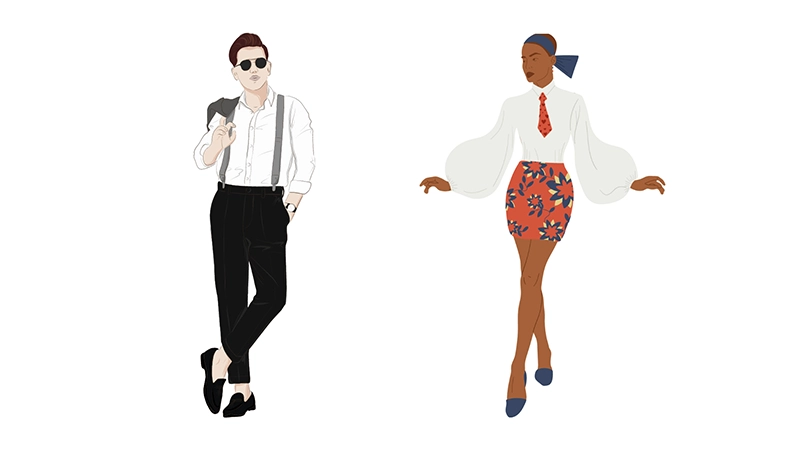
Where did semiformal come from?
The concept of “semiformal” attire has a nuanced history rooted in social customs and evolving fashion trends. Originating in the early 20th century, the term was coined to describe a level of dress that was more relaxed than traditional formal wear yet still elevated above everyday casual attire. This was a time when societal norms were shifting; the rigid formality of the Victorian era was giving way to a more relaxed, modern sensibility.
A gap emerged in the dress code lexicon as social events diversified, from grand balls to intimate dinner parties. There was a need for attire that could bridge the divide between the opulence of a black-tie event and the comfort of a casual gathering. Enter “semiformal,” a term that encapsulated this middle ground. It offered a solution for those who wanted to present themselves elegantly without the constraints of full formal wear.
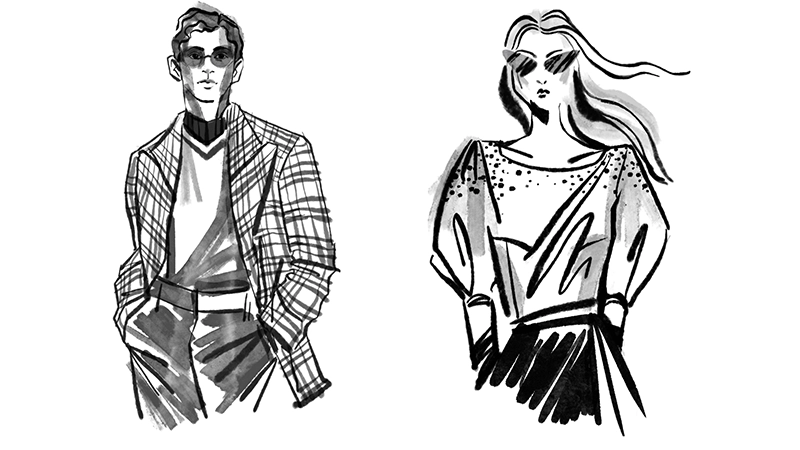
Over the years, the definition of semiformal has been refined, influenced by cultural shifts, fashion revolutions, and individual interpretations. Still, its essence remains the same: a balanced blend of sophistication and ease, perfect for a wide array of occasions.
For the Gents: men’s guide to semiformal
For men navigating the realm of semiformal attire, the key is to strike a balance between elegance and comfort. You’re not aiming for the full-on glamour of a tuxedo, but a well-tailored suit is your best friend here. Opt for darker shades like charcoal or navy for evening events, while lighter hues can work for daytime functions.
A crisp, clean dress shirt is non-negotiable, and your tie should complement, not overpower the ensemble. Footwear is another crucial element; leather shoes are the go-to, preferably in a shade that harmonizes with your suit. Accessories should be kept to a minimum: a classic wristwatch and perhaps a pocket square for that extra touch of sophistication.
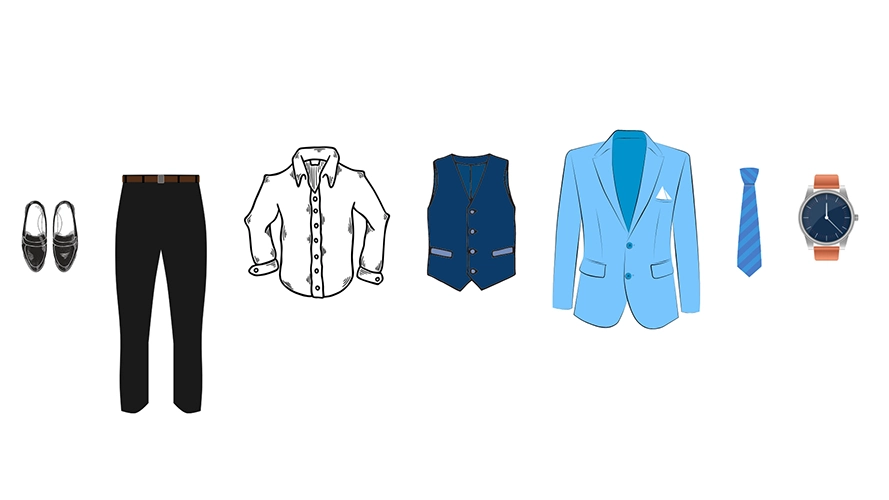
The goal is to look polished without appearing overly formal, to stand out for your style rather than your adherence to a rigid dress code. In essence, semiformal attire for men is about understanding the nuances of the occasion and dressing in a way that respects both the event and your personal style.
For the Ladies: women’s guide to semiformal
The options for women and the world of semiformal attire are delightfully varied yet guided by a sense of refined elegance. A cocktail dress is often the go-to choice, but it should be more glamorous than something you’d wear to the office.
The length can vary, but it’s generally best to avoid full-length gowns, which veer into formal territory. If dresses aren’t your style, consider a chic blouse and skirt ensemble or even tailored trousers paired with a sophisticated top. Footwear should be elegant; heels are often preferred, but if you’re more comfortable in flats, opt for a pair that’s more evening-appropriate than your everyday wear. Accessories can be your playground, but remember, less is often more.
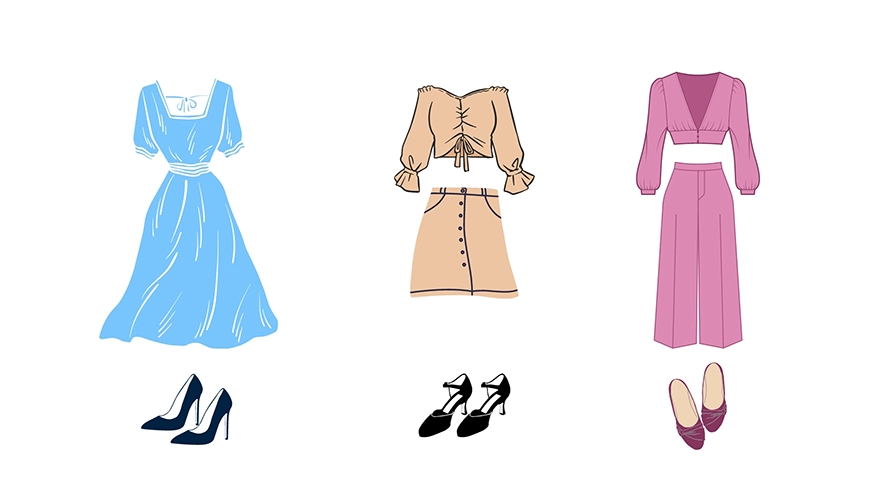
A statement necklace or a pair of dazzling earrings can elevate your look, but avoid going overboard. The aim is to achieve a balance between style and substance, to look effortlessly chic without overshadowing the occasion.
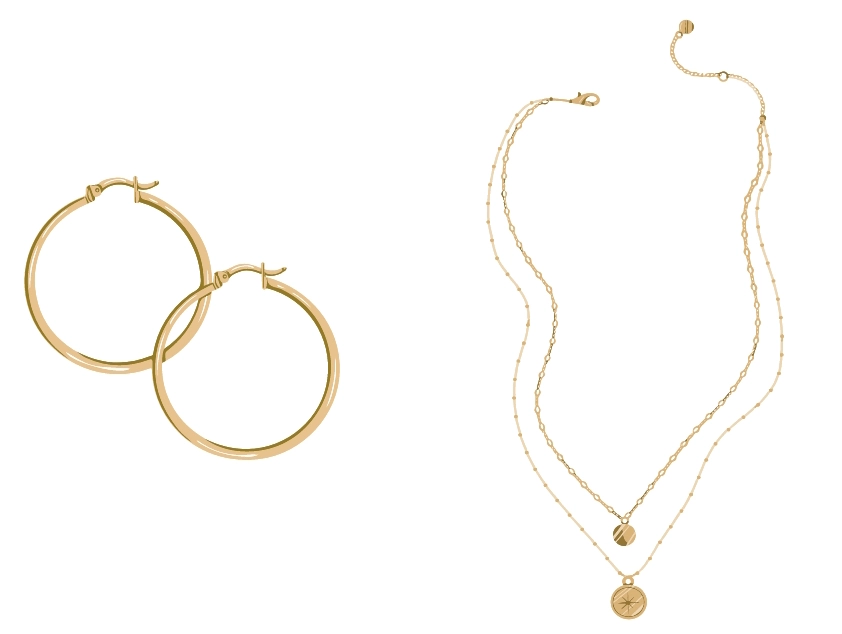
In a nutshell, semiformal attire for women offers the freedom to express individual style within the framework of elegance and decorum.
The Do’s and Don’ts
Navigating the do’s and don’ts of semiformal attire can feel like walking a tightrope, but it doesn’t have to be a high-stress endeavor. Let’s break it down.
Do’s:
- Do Pay Attention to Fabric: Choose high-quality but not overly extravagant materials. Think cotton, silk, or light wool blends.
- Do Accessorize Wisely: A well-chosen accessory can elevate your look. For men, a pocket square or a classic watch works wonders. Ladies, a statement piece of jewelry can be your best friend.
- Do Consider the Time of Day: Lighter colors for daytime events, darker hues for the evening.
- Do Check the Invitation: Sometimes, the invite provides clues about the expected level of formality.
Don’ts:
- Don’t Go Too Casual: This isn’t the time for sneakers or flip-flops. Men avoid overly casualties. Women, steer clear of anything that could be considered beachwear.
- Don’t Overdo It: You’re not attending a royal ball or a Hollywood premiere. Keep it elegant but not ostentatious.
- Don’t Ignore Grooming: Your outfit might be on point, but if your hair looks like you just rolled out of bed, it’s a no-go.
- Don’t Forget the Venue: A garden party and a corporate event might call for semiformal attire, but they’re different. Adapt your outfit to the setting.
Remember, the essence of semiformal is balance. You’re aiming for that sweet spot between casual comfort and formal elegance. Keep these do’s and don’ts in mind, and you’ll fit in and stand out for all the right reasons.
Occasions for semiformal
When it comes to occasions that call for semiformal attire, the list is as diverse as it is specific. Weddings are a classic example, especially those that are neither a barefoot beach affair nor a cathedral extravaganza. Cocktail parties, too, often fall under the semiformal umbrella, offering a space for socializing without the stiffness of a black-tie event.

Corporate gatherings, such as award ceremonies or annual dinners, frequently opt for a semiform dress code to maintain a sense of professionalism without stifling individual expression. Milestone celebrations like significant anniversaries or engagement parties are other instances where semiformal is the name of the game. Even some upscale dining establishments suggest or require semiform attire, elevating the dining experience to something more than a meal.
The key takeaway? Semiformal is versatile. It’s the dress code that fits a variety of settings, allowing for a blend of comfort and elegance. So, the next time you see “semiformal” on an invitation, consider the nature of the event, the venue, and even the time of day to tailor your outfit accordingly.
Can jeans be semi-formal?
It’s a topic that’s sparked debates and even a bit of controversy in the fashion world. Here’s the deal: Jeans are generally not considered semi-formal attire. They’re the epitome of casual wear, and while they’ve made their way into some offices and even certain upscale events, they usually don’t meet the criteria for a semi-formal dress code.
Now, there are exceptions to every rule. Some high-end, dark-wash jeans without any distressing can sometimes pass in more relaxed semi-formal settings. But even then, you’re walking a fine line. If you pair them with a blazer, dress shirt, and formal shoes, you might just pull it off. But it’s a risky move and highly dependent on the specific event and its attendees.
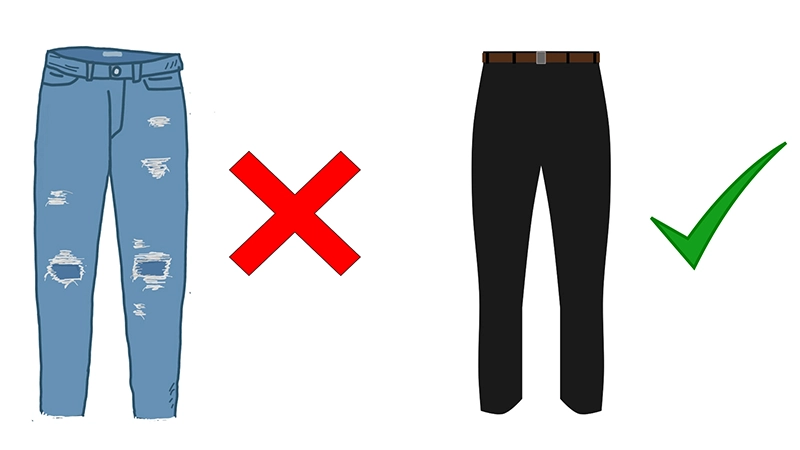
So, if you’re pondering whether to don those jeans for a semi-formal occasion, the safest bet is to opt for something more traditionally accepted, like slacks or a skirt. Why take the gamble and risk feeling out of place? Stick to the tried-and-true, and you won’t go wrong
Is a tie required for a semi-formal?
Well, here’s the lowdown: While a tie is often associated with more formal settings, it’s not an absolute must for every semi-formal event. However, it does add a layer of polish that aligns well with the semiformal ethos. For men, a tie can complete the look if you’re wearing a suit, making it clear that you’ve put thought into your appearance.
But let’s get into the details. If the event is leaning more towards the formal side of semiformal, think corporate dinners or weddings—a tie is generally a good idea. On the flip side, if the occasion is a bit more relaxed, like a cocktail party or an evening soiree, you might get away with a well-fitted dress shirt and a suit sans tie.
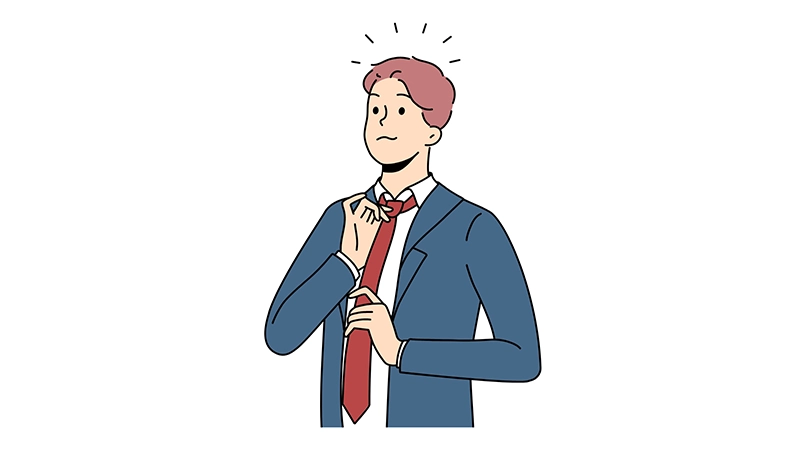
So, is a tie required for semiformal? Not always, but when in doubt, it’s better to err on the side of slightly overdressed than underdressed. A tie can always be removed if you find you’re on the formal end of the spectrum, but showing up without one when it’s expected can make for an awkward situation.
What is the difference between semi-formal and full formal attire?
At first glance, the lines might seem blurred, but distinct differences set the two apart. Let’s dive in.
Full formal, often referred to as “black tie,” is the epitome of elegance and sophistication. For men, this means a tuxedo complete with a bow tie, cummerbund, and patent leather shoes. Women are expected to don full-length evening gowns, often accompanied by gloves and elaborate accessories. The atmosphere at a full formal event is one of grandeur, and the attire reflects that.
On the other hand, semi-formal is a bit more relaxed. Men can opt for a well-fitted suit, usually without the need for a waistcoat or a bow tie. A long tie is generally acceptable, and the shoes don’t need to be patent leather. Women have the option of cocktail dresses, shorter gowns, or even chic separates like a blouse and skirt combo. The vibe is still elegant, but there’s room for personal expression.
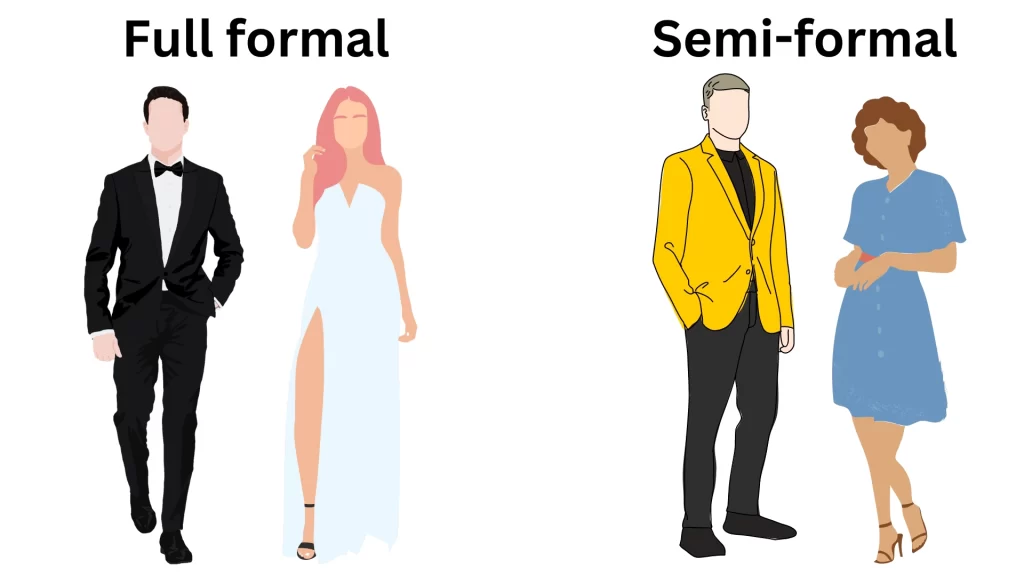
The key difference lies in the formality level and the dress code’s strictness. Full formal is rigid, leaving little room for interpretation, while semi-formal offers a bit more flexibility. Both demand a certain level of sophistication, but semi-formal allows for a touch of individuality without compromising the overall elegance of the occasion.
What should you not wear to a semi-formal event?
Navigating the “don’ts” of semiformal attire can save you from fashion faux pas that could make your evening less than enjoyable. So, what should you steer clear of?
- Jeans: As versatile as they are, jeans are generally a no-go for semiformal events. They’re just too casual to fit the bill.
- Sneakers and Flip-Flops: Footwear can make or break an outfit. Casual shoes like sneakers or flip-flops are out of the question.
- Overly Casual Tops: Think graphic tees, tank tops, or anything you’d wear to a barbecue. These are too laid-back for a semi-formal setting.
- Shorts: Whether it’s Bermuda shorts for men or short skirts for women, these are too casual and best saved for other occasions.
- Flashy Accessories: While accessories can elevate an outfit, overly flashy or bulky items can detract from the overall look. Keep it classy.
- Too Much Bling: For women, overly glitzy jewelry can be distracting. The same goes for men with overly ornate cufflinks or watches.
- Informal Fabrics: Materials like jersey, denim, and other casual fabrics don’t usually fit the semiformal mold.
- Overly Revealing Outfits: While semiformal attire allows for some personal expression, avoiding anything too revealing, like plunging necklines or extremely high hemlines, is best.
- Athletic Wear: This one’s a given. Gym clothes, including athletic shoes, have no place at a semiformal event.
- Costume-like Outfits: Unless it’s a themed party, avoid anything that looks like it belongs at a Halloween event.
The key to nailing semiformal attire is balance. You’re aiming for that sweet spot between casual and formal, where you look polished but not stiff. Keep these “don’ts” in mind, and you’ll be well on your way to mastering the art of semi-formal dressing.


